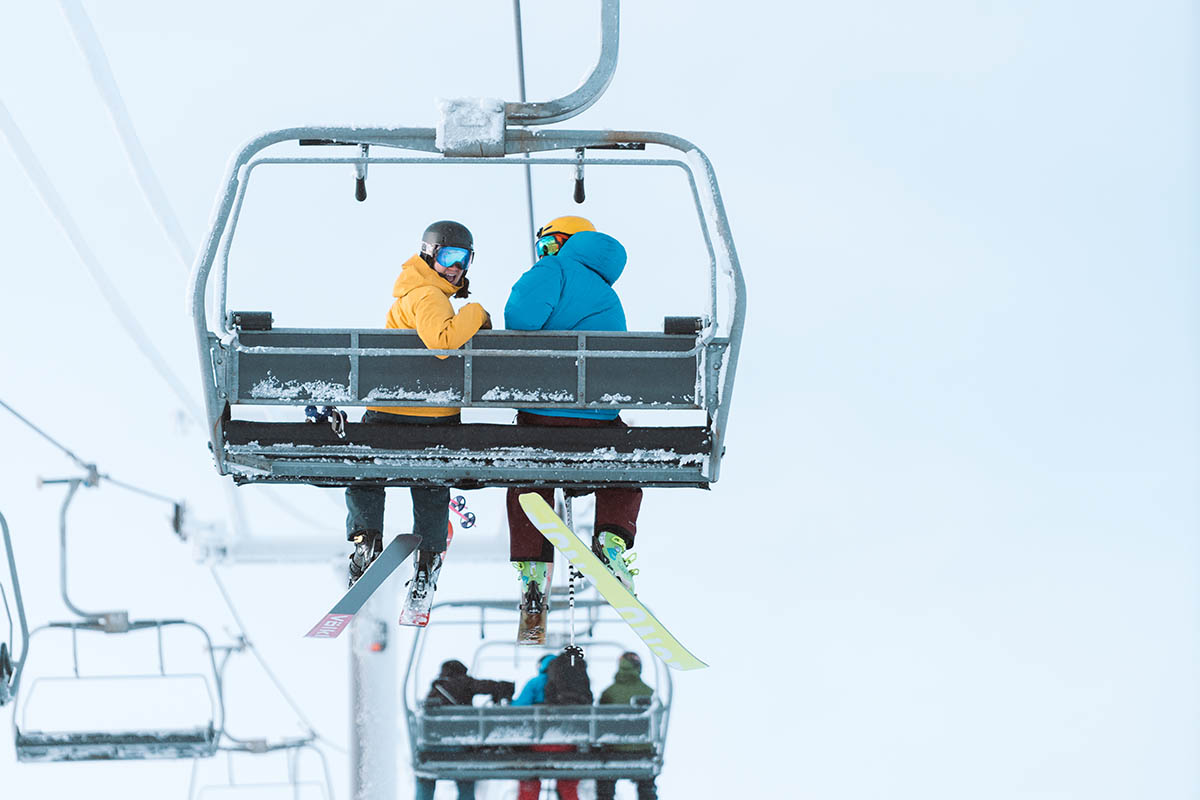
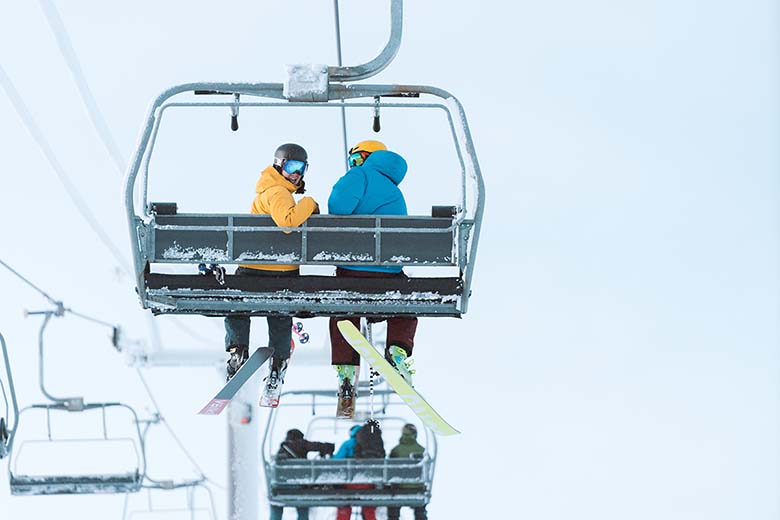
There’s something truly satisfying about skiing in bounds, despite the potential for crowds. Maybe it’s the fact that you can accomplish thousands of feet in a day, or just the convenience of a warm lodge nearby to thaw cold hands and feet. But when you’re out of the habit, the sheer number of important items to pack can be intimidating. Below we outline everything you need for resort skiing, including critical equipment like skis and boots, ski clothing such as a jacket and gloves, casual layers and essentials for off the mountain, and personal items and extras. For each category, we’ve listed necessary items—along with our top picks—as well as optional gear. To see all our product recommendations in one place, check out our detailed ski gear reviews.
| Ski Equipment | Ski Clothing | Off-Mountain (Casual) Clothing & Essentials | Personal Items & Extras |
|---|---|---|---|
|
❒ All-mountain skis w/ downhill bindings ❒ Downhill ski boots ❒ Ski poles ❒ Helmet ❒ Goggles
❒ Ski and boot bags ❒ Heated insoles ❒ Small ski backpack ❒ Insulated water bottle/hydration bladder ❒ Beacon, shovel, and probe |
❒ Baselayers ❒ Midlayer ❒ Ski jacket ❒ Ski pants ❒ Ski gloves ❒ Ski socks
❒ Neck gaiter or balaclava ❒ Liner gloves ❒ Heated socks |
❒ Winter jacket ❒ Winter boots ❒ Winter gloves or mittens ❒ Warm casual layers ❒ Beanie ❒ Warm socks ❒ Sleepwear ❒ Undergarments ❒ Sunglasses
Optional: ❒ Fleece jacket ❒ Swimsuit ❒ Scarf ❒ Slippers ❒ Flip-flops |
❒ Ski passes/lift tickets ❒ Pocket-friendly snacks ❒ Handwarmers ❒ Toe/foot warmers ❒ Microfiber cloth ❒ Towel ❒ Tote bag ❒ Camera ❒ Hand sanitizer ❒ Sunscreen ❒ Lip balm ❒ Tissues ❒ Travel pillow ❒ Toiletries kit ❒ Toothbrush and toothpaste ❒ Personal medications ❒ Cell phone with charger ❒ Headphones ❒ Insurance cards ❒ ID/passport, cards, and cash |
Editor's note: The table above provides a brief overview of what you'll need for a day on the slopes, but our full PDF version is printable and offers a more comprehensive breakdown of the necessities and nice-to-haves.
See Our Ski Trip Checklist PDF
Whether you're taking advantage of a long weekend, going on a once-a-year family trip with the kids, or enjoying an extended stay in the Alps, the gear below is what we bring on every inbounds ski trip to ensure we're ready to hit the slopes as soon as we arrive. While we've included recommendations on our favorite hard goods, rest assured that there are tons of quality skis, boots, and other equipment to choose from—even rental equipment will get the job done if you don't want to go through the hassle of traveling with all of your own gear. We've also included a few optional items that may or may not be worth packing depending on your preferences and exact itinerary.
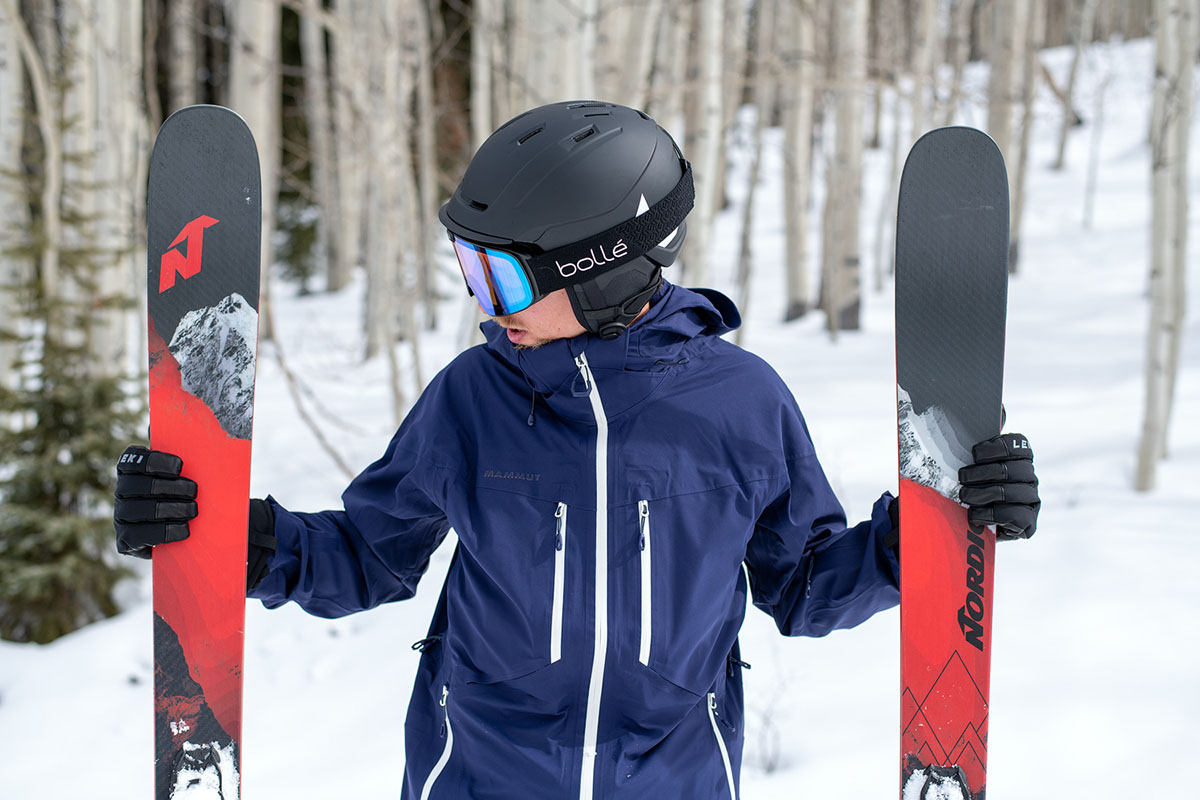
Our top pick: Nordica Enforcer 94 ($750)
What we like: About as well-rounded and versatile as it gets in the all-mountain category.
What we don’t: A little narrow for powder days—if you're traveling to an area with consistent snowfall, you'll get better float with a wider ski like the Salomon QST 106.
Our top pick: Market Griffon 13 ID ($270)
What we like: Well built and reliable, transfers energy very well, and reasonably priced.
What we don't: Despite recent improvements, it’s still not the easiest to step into in powder—for that, we turn to Salomon's STH2 16 MN.
Our top pick: Tecnica Mach1 MV 120 ($700)
What we like: Highly customizable fit and excellent all-around performance.
What we don't: Intermediate riders can save considerably with an alternative like Salomon's $500 S/Pro MV 100.
Our top pick: Leki Detect S ($100)
What we like: Tough construction, ergonomic grips, and innovative strap system that boosts safety and convenience.
What we don't: Pricey for an aluminum design—Evo's tougher Merge poles cost half as much and will meet the needs of most recreational skiers.
Our top pick: Smith Vantage MIPS ($275)
What we like: Top-notch build quality, class-leading comfort, and great mix of warmth and ventilation.
What we don't: Those who exclusively ski inbounds can save some cash with Smith's more resort-focused—albeit slightly heavier and less ventilated—Level MIPS.
Our top pick: Smith I/O Mag ChromaPop ($270)
What we like: Superb optics, comfortable fit, and available in a range of sizes.
What we don't: Expensive and not the fastest quick-change lens system on the market—that title goes to Anon's M4 Toric MFI.
While choosing the right equipment is a no-brainer for enjoying your time on the slopes, seasoned resort skiers know that sliding on snow is no fun if you're not dressed appropriately for the conditions. Selecting the right layers—from your outer shell down to your baselayers—will help you maximize your lift tickets so that you can spend more time skiing and less time inside the lodge. And don't overlook all-important accessories like quality gloves and ski socks, which will help protect against potential injuries like blisters and frostbite.
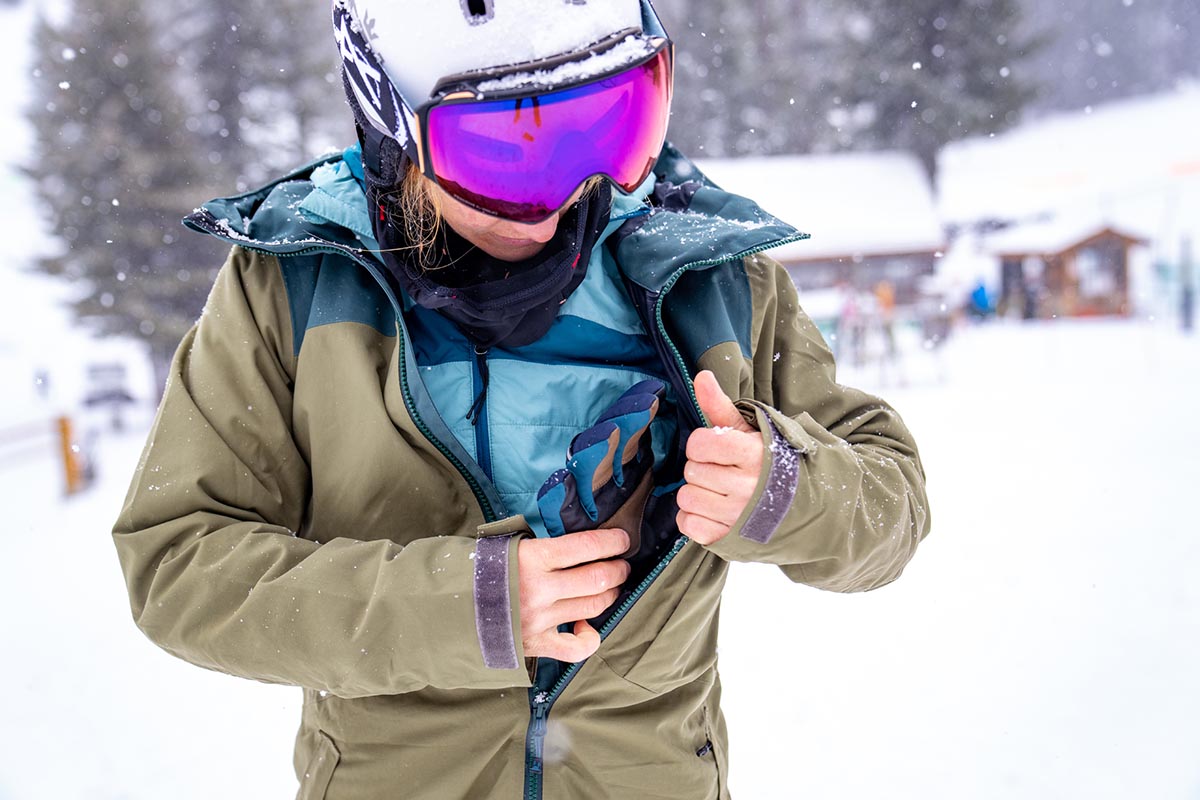
Our top pick: Smartwool Classic Thermal Merino 1/4 Zip ($120)
What we like: Warm, super soft against the skin, resists moisture, and doesn't hold stink like polyester baselayers.
What we don't: Synthetic alternatives like the Patagonia Capilene Midweight Crew are cheaper and more durable.
Our top pick: Arc’teryx Atom Jacket ($280)
What we like: Excellent balance of warmth and breathability, great mobility, and just-right fit for many.
What we don't: If you run warm or want a layer that can pull double duty for high-output backcountry use, fleece jackets like the Patagonia R1 Air Full-Zip Hoody are better at dumping heat.
Our top pick: Helly Hansen Alpha 4.0 ($475)
What we like: All the features we look for in a capable resort-ready design, including solid (but not overwhelming) warmth, fantastic comfort and mobility, and clean looks.
What we don't: A non-insulated shell like Arc'teryx's Sabre Jacket will breathe much better and provide added versatility (you can add or remove layers depending on conditions).
Our top pick: Arc’teryx Sabre Pant ($600)
What we like: Bomber protection, practical storage layout, and light-but-burly construction.
What we don’t: Polarizing fit and overkill for recreational resort-goers—for a more wallet-friendly option with a relaxed fit, we like Trew Gear's Eagle Pant Primo.
Our top pick: Hestra Army Leather Heli Glove ($160)
What we like: Premium build quality, warmth, and comfort for less than most high-end competitors.
What we don’t: You'll need to occasionally reapply a leather conditioner to keep moisture at bay.
Our top pick: Smartwool Ski Targeted Cushion OTC ($30)
What we like: Great fit and performance with strategic cushioning and mesh for added breathability.
What we don’t: Smartwool only offers a two-year warranty compared to the lifetime guarantee you get with Darn Tough offerings like their Solstice OTC.
Ideally, you'll be spending most of your time on the slopes, but the day is far from over when the lifts stop turning. For après activities and exploring around town, we always bring along casual layers like a winter jacket, winter boots, warm socks, and a beanie (among other items). If your accommodations include access to a hot tub or heated pool, you may also want to consider packing a swimsuit and flip-flops.

Our top pick: The North Face McMurdo Parka ($400)
What we like: Warm, water- and windproof, and decently breathable for use in milder temperatures—all at a very palatable price point.
What we don't: Decidedly casual look and feel—if you want a jacket that can pull double duty for performance use, check out the Rab Neutrino Pro.
Our top pick: The North Face Chilkat 400 V ($159)
What we like: A well-balanced design that’s equally at home shoveling the driveway and running errands as it is hiking on slick trails.
What we don't: Thick insulation is overkill for mild days or dry conditions; for long hikes, we'd prefer something less stiff and bulky (like the Merrell Thermo Chill Mid WP).
Our top pick: Outdoor Research Stormtracker ($79)
What we like: Just-right warmth and weight for most activities, easy to get on and off, and great dexterity once broken in.
What we don't: Not fully waterproof—if that's a priority for you, we recommend the Hestra Army Leather Gore-Tex.
The items above will get you through just about any day at the ski resort, but there are several smaller necessities and nice-to-haves that we often keep in our pocket or in the car. Some should definitely not be forgotten (like a ski pass), while others (like handwarmers) certainly aren't required but can help make your experience more comfortable and enjoyable.
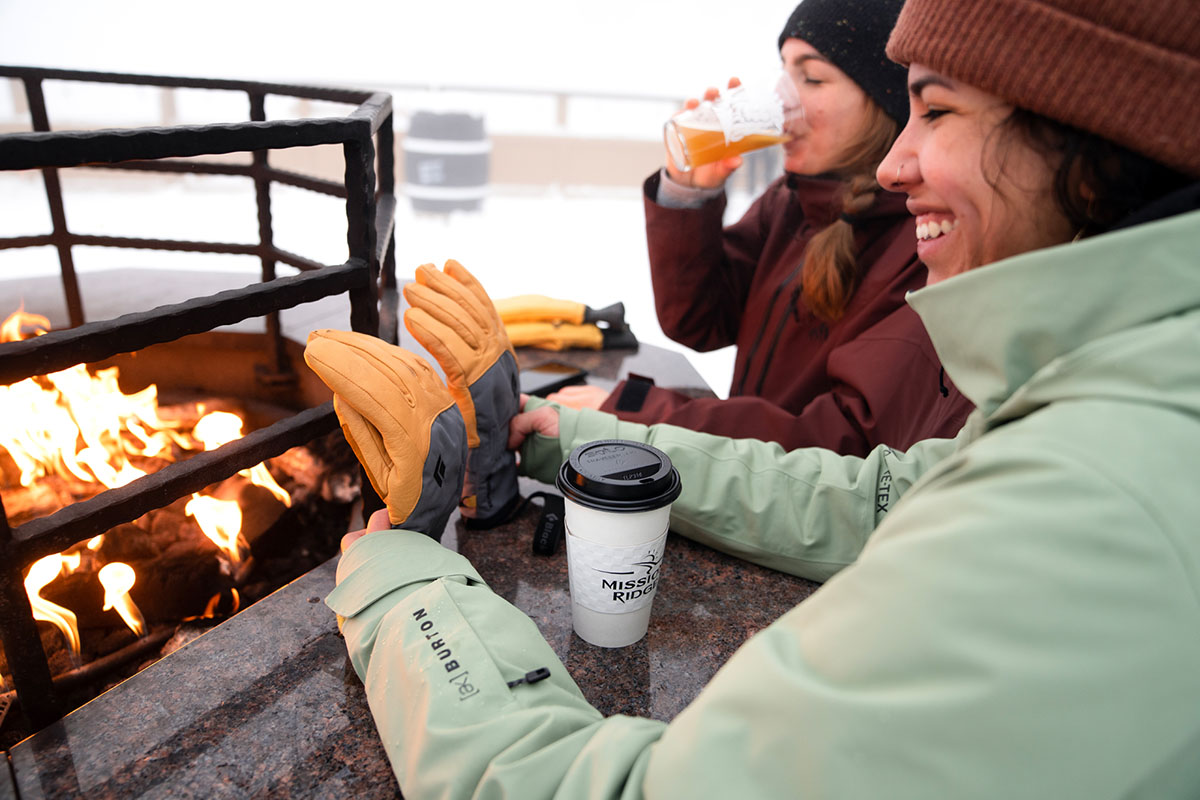
While the list above covers the basics for most outings to the ski resort, there are other items to consider depending on conditions on the mountain, your objectives, and how important après-ski is to you. Starting with conditions, not all terrain on each mountain is open every day. The good news is that resorts boast huge maps you can check out ahead of time, but runs open and close based on their coverage (is there enough snow to safely cover obstacles?) and stability (what's the avalanche danger?). Before you can enjoy a powder day, ski patrol evaluates the snow and mitigates potential hazards by detonating explosives to trigger unstable snow as best they can. After big storms, patrol might need additional time to open every run on a large mountain, meaning some terrain may be closed for part or all of the day. Similarly, chairlifts may be closed due to high winds, which can happen even without snowfall (and is particularly common at higher-altitude resorts like those in Colorado and the Eastern Sierra).
Another point to consider is out-of-bounds or "sidecountry" skiing. It's alluring to leave the resort boundary through the gates in search of untracked snow, but if you’re considering venturing out of bounds, make sure you understand the risk you’re taking and are prepared for the worst-case scenario. While adjacent to the ski resort, "sidecountry" terrain isn’t controlled for avalanches by ski patrol, meaning you should be skiing with a partner and carrying all the requisite avalanche safety gear—beacon, shovel, and probe—along with the knowledge and training on how to use it. We put "sidecountry" in quotation marks because it's essentially the backcountry—you just happen to be close to a ski area. For more information on out-of-bounds skiing and all the gear you’ll need for backcountry adventures, check out our Backcountry Skiing Checklist.
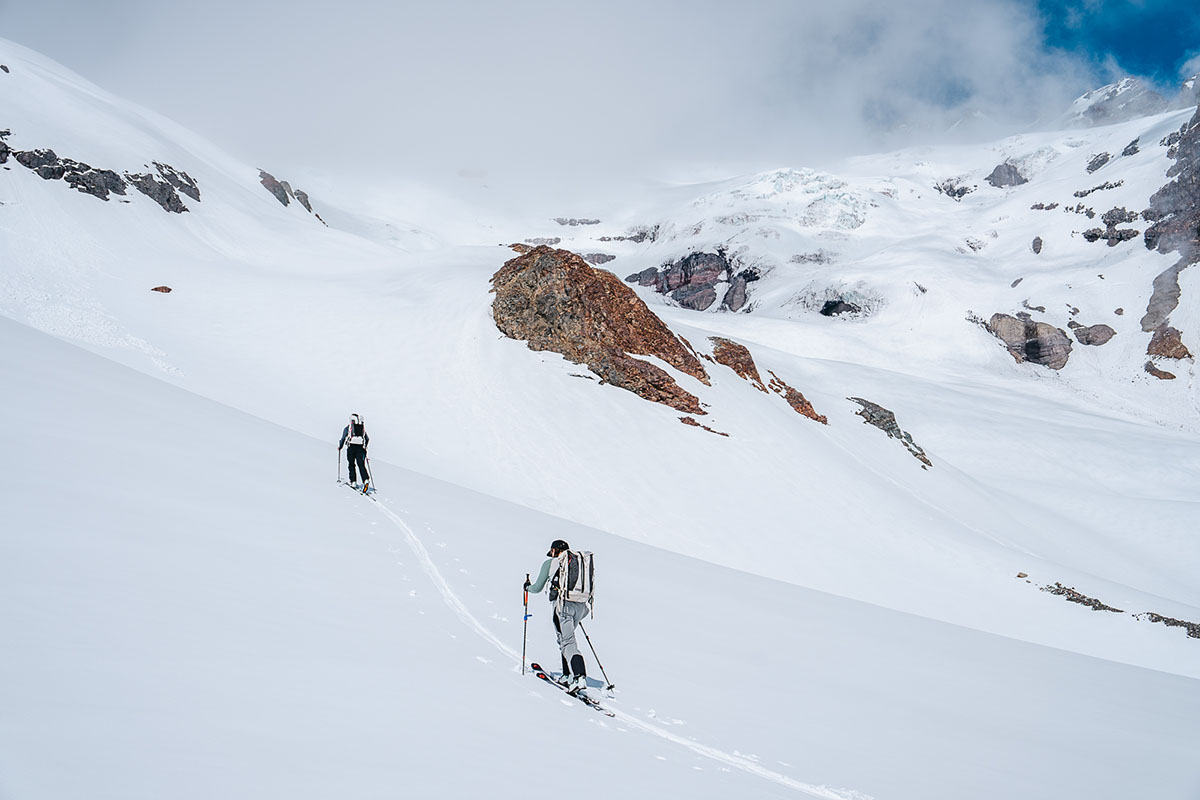
Last but not least, no ski day is complete without the French Alps tradition of après-ski. Translating to "after skiing", the art of après includes celebrating the end of the ski day by recounting the day's escapades, usually with some kind of beverage in hand. Suitable locations include the deck of a ritzy bar in the Alps, or—as is more common in the U.S.—in a camp chair around a fire in the parking lot. Portable fire pits have leveled up the craft of a good après celebration, and we love Solo Stove’s offerings for their lack of smoke and easy portability.
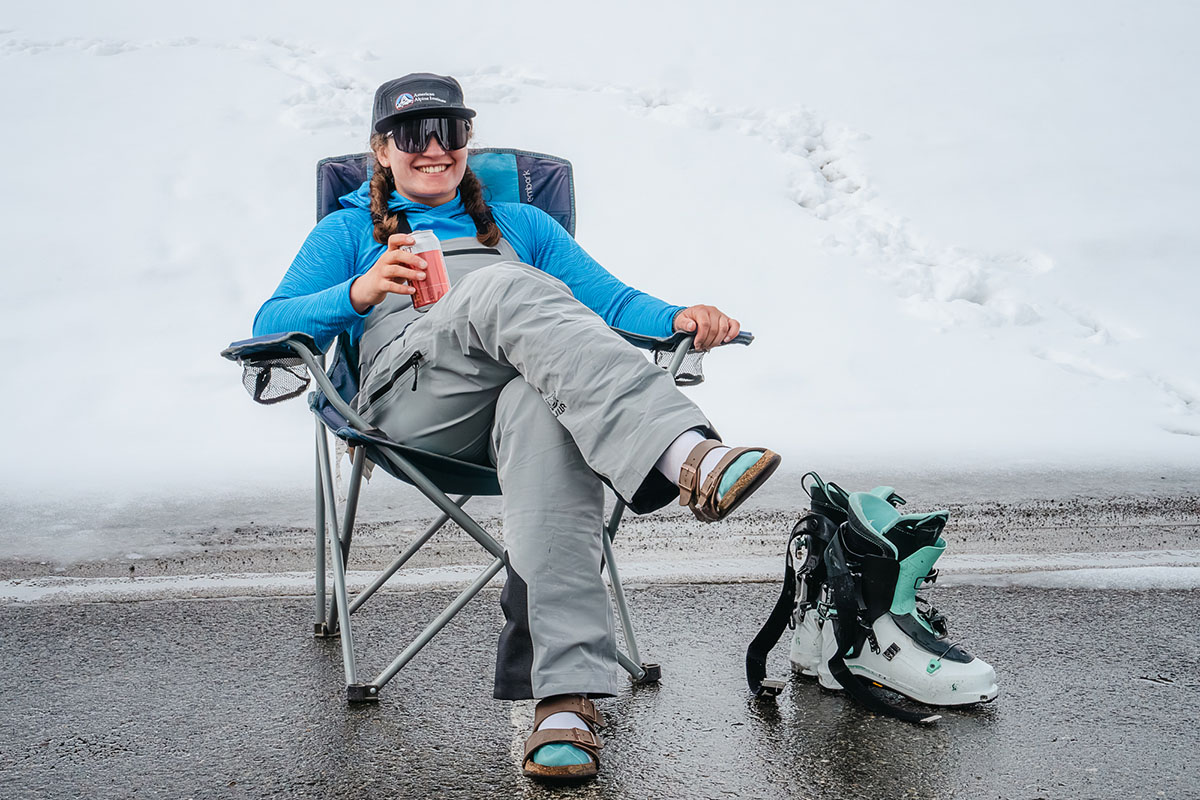
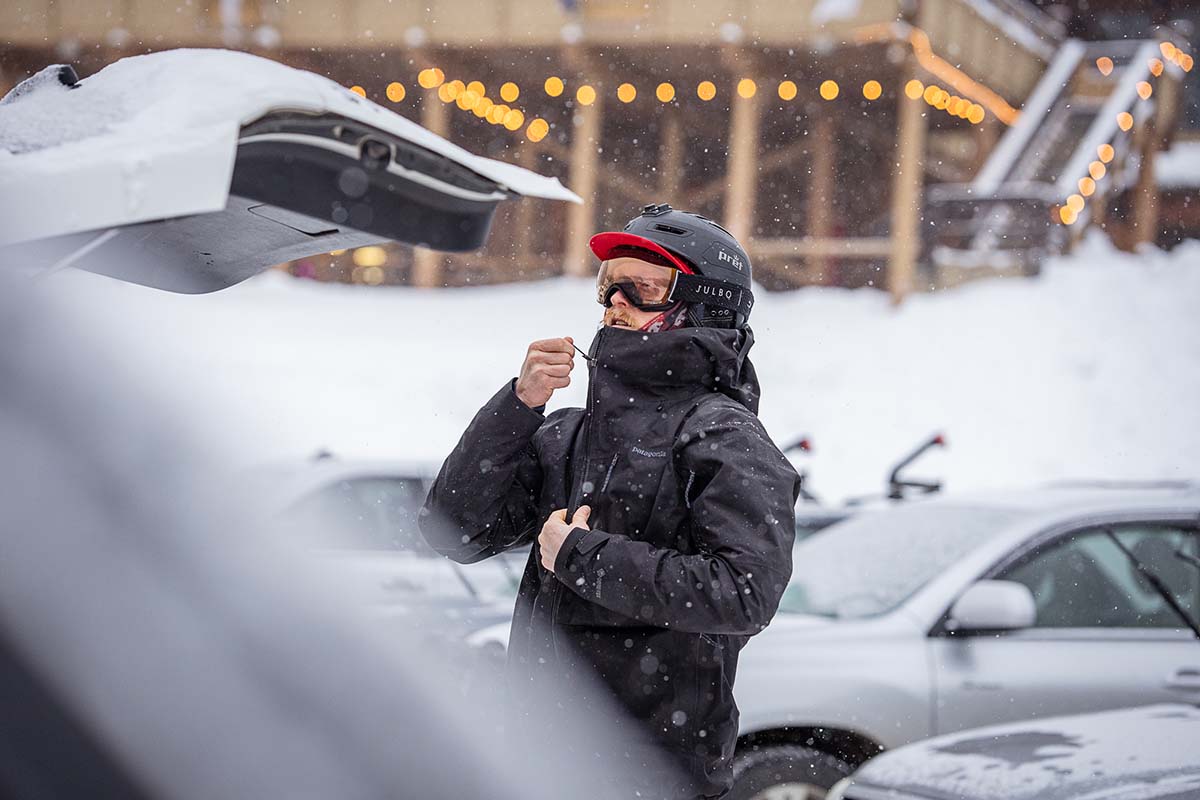
Although ski gear and clothing is widely available online, we recommend heading to a ski shop to try things on, get advice from an expert, and support your local small business. If you live in a location that does not have a ski shop or would prefer to browse from the comfort of your couch, we have some favorite online sites, too. We compiled a list of the 5 Best Sites to Buy Ski Gear, and at the top is Evo.com. With five stores across the Western U.S., Evo has an enormous inventory both in-person with helpful staff and online. REI Co-op also has a healthy selection of ski gear with free shipping for members (non-members get free shipping on orders over $60), but you can also choose to ship online orders to one of their 180+ stores nationwide for free pickup. Last but not least, Backcountry.com has an impressive selection of winter gear, free two-day shipping on orders over $50, and great sales throughout the year.
Back to Our Ski Trip Packing List See Our Ski Gear Reviews